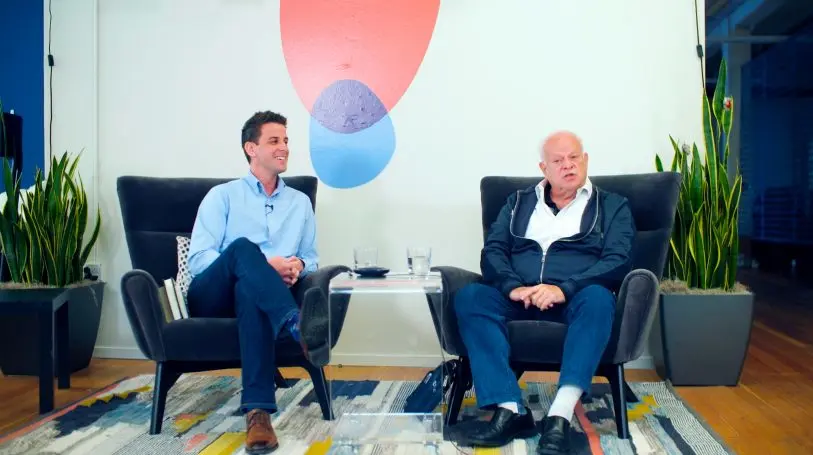When a team of chemists, circuitry experts, and metallurgists at Bell Labs began in the 1940s to experiment with solid-state electronics, they weren’t oblivious to the need to translate their findings into products for parent American Telephone and Telegraph. But that wasn’t top of mind.
“The formal purpose of the group was not so much to build something as to understand it,” journalist Jon Gertner explains in his book, The Idea Factory: Bell Labs and the Great Age of American Innovation.
BetterUp, which provides a mobile leadership development and employee coaching platform, is set to announce today a new venture that aims to carry on in that same spirit.
The big difference is that BetterUp Labs isn’t interested in computers and telecommunications equipment. Rather, it wants to explore how human beings are wired.
In turn, it hopes to help them flourish–especially at work. “We want to pioneer this science,” says Alexi Robichaux, the CEO of BetterUp, which has committed to investing $15 million to $20 million in the effort over the next five years.
BetterUp’s chief innovation officer, Gabriella Rosen Kellerman, will run the lab. To form its agenda, it is leaning on a coterie of high-profile academics, including the University of Pennsylvania’s Martin Seligman, widely considered the father of positive psychology.
“I get asked to consult a fair amount,” Seligman notes. “I usually say no.”
This time, however, Kellerman invited Seligman to describe his ideal arrangement. His response: “a Bell Labs model” that would delve into “the most cutting-edge ideas” but “didn’t care if you produced something commercial right away.”
“To my shock,” recalls Seligman, “they said, ‘That’s exactly what we’d like to do.'”
From notebook to playbook
This isn’t to say that BetterUp, which has attracted $39 million in venture capital, won’t ultimately be looking to the lab to enhance its digital offerings. Over time, its intention is for the researcher’s notebook to become the practitioner’s playbook.
At present, thousands of employees at some 50 companies use the BetterUp app to plug into virtual coaching sessions–30 minutes weekly, plus impromptu check-ins, as needed. Numbering about 1,000 around the world, those on the BetterUp coaching staff act as sounding boards and supply workers with tools to manage their stress, improve their communication and collaboration, make good decisions, and more.

Pricing varies depending on how many employees are signed up for the system, but it generally runs a few hundred dollars per month per worker for unlimited access to an individual coach.
“It’s a customized intervention,” says Jessica Amortegui, the head of global learning and development at Logitech, where about 250 employees out of a fulltime workforce of 3,000 are being coached by BetterUp. Logitech, a maker of computer accessories, has found that these BetterUp users exhibit growing self-efficacy–that is, the belief that they have the capacity to take control in a given situation and accomplish their goals. “That’s really powerful,” Amortegui says.
Beyond the metrics, Amortegui has also witnessed the impact first-hand. A couple of years ago, she tried BetterUp while she was navigating some health issues and unable to go full throttle at the office. She says that her coach gave her “permission to talk about something that I wouldn’t have normally brought into the workplace.” By sharing some mindfulness methods, the coach taught Amortegui “not to anesthetize myself to what was happening but to tune into it.” Eventually, that led her to stop feeling guilty about her condition, aiding her recovery.
Rigorous research
Since BetterUp’s founding in 2013, it has taken pride in drawing on evidenced-based research–from Seligman, Angela Duckworth, Shawn Achor, and others–to assist its clients. Thirteen in-house psychologists, neuroscientists, and psychiatrists oversee the coaches and their techniques.
Of course, other companies that try to bring out the best in people also tout their rigor. For example, Tenacity has used “social physics” to increase employee engagement and retention at call centers and in other high-turnover industries. The Marcus Buckingham Company, a unit of ADP, utilizes artificial intelligence to capture the tactics of the highest-performing team leaders at a firm and then suggests them to others–in just the right way, at just the right moment–so that they can manage more effectively. Steelcase deploys anonymous sensors to track how employees interact with their workspace, allowing them to make the most of their physical surroundings as well as thrive from a cognitive and emotional standpoint.
“It’s kind of like taking a lid off the organization,” says Tracy Brower, a principal of Steelcase’s Applied Research + Consulting group. “You can see so many different patterns of behavior.”
What sets apart BetterUp Labs–even from BetterUp itself–is that it doesn’t just want to glean the latest insights from behavioral science. It wants to fundamentally shape them. Coming from a company, “it’s a vision I haven’t seen before,” says Seligman.
For now, he is guiding BetterUp Labs in four areas.
The first is wrestling with the question, “Do I matter?” in a work context. Seligman points out that people often speak of trying to find “meaning” at work. “I’ve never been attracted to that because of its vagueness,” he says. He thinks that zeroing in on Rebecca Newberg Goldstein‘s notion of “mattering” may prove more illuminating.
The second area is what Seligman calls “prospection”–people’s power to imagine the future, in part by “metabolizing the past and present.” Harnessing brain science so that people can more easily envision new scenarios, Robichaux says, could have major implications for corporate planning.
The third area is to figure out what types of people excel at cultivating in others what Seligman has dubbed PERMA: Positive Emotion, Engagement, Relationships, Meaning, and Accomplishment–the five building blocks of well-being. “We know what the ingredients are,” Seligman says, “but we don’t know how to recruit for this.”
“Essential and enduring skills”
Being able to demonstrate how to raise PERMA in a company not only will lead to “concrete business outcomes and higher performance,” Robichaux says, but it will preserve jobs in an era where automation is threatening employment. “These will be the essential and enduring skills,” he says.
The fourth area will be to try to develop machine learning that can leverage psychometrics and a variety of other inputs to successfully gauge who will be a good sales representative, say, or a good line manager. “Can we Moneyball the workplace?” asks Seligman.
To probe these topics and others, BetterUp Labs will gather data by partnering with client companies, conducting independent surveys, and–in what could be its real advantage–tapping into the existing users of its platform (with appropriate permission and the maintenance of privacy).

To be sure, some of these fields are wider open than others. The “Moneyball” concept, for one, is being pursued by a host of job-matching companies peddling predictive analytics, such as ClearFit, Koru, and Pymetrics.
BetterUp Labs also has a we’ve-been-here-before quality. As the human relations movement gained steam early in the 20th century, Elton Mayo, Abraham Maslow, Douglas McGregor, Frederick Herzberg, Peter Drucker, and other eminent scholars examined how companies could embrace the “whole person” so that he or she would truly shine at work.
Yet despite all of the wisdom that they conveyed–and the endless reams of HR literature that have been churned out since–fashioning a work culture where people are fulfilled and highly productive remains “the No. 1 or No. 2 problem for most companies” year after year after year, says Josh Bersin, a longtime consultant on talent, learning, and leadership.
“There is still a lot of room for innovation,” asserts Bersin, who is also on BetterUp’s Science Board.
Of that there is no doubt–which is exactly why BetterUp positioning its new initiative as the “Bell Labs for People” has such a nice ring to it.
Recognize your brand’s excellence by applying to this year’s Brands That Matter Awards before the early-rate deadline, May 3.
